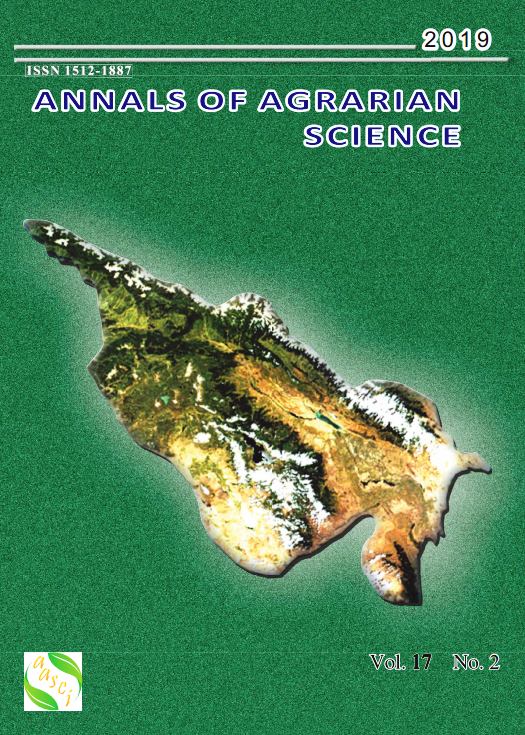Prevalence of Bovine Tuberculosis and its risk factors in Georgia
Keywords:
Cattle, zoonosis, bovine tuberculosis, risk factors, pathology assessment, cross-sectional studyAbstract
The main goal of this study was twofold: 1) to assess regional distribution of bovine tuberculosis (bTB) in domestic cattle in Georgia; and 2) to describe the disease risk factors in the country. Study sample and methods: Randomly selected cattle carcasses were examined in all operational slaughterhouses. The information on cattle age, sex, breed, and origin were obtained from the national registry. Post-mortem sanitary inspection of carcasses was done for all randomly selected cases. In case of macroscopic changes, samples from internal organs and lymphatic nodes were collected for further histopathological and microbiological examination. Geographical coordinates for all participating slaughterhouses and farms were measured and integrated into GIS system. Descriptive statistical analysis was performed to describe bTB regional distribution in Georgia and stratified risk analysis was done to identify high risk strata for bTB in the country. In total, 2286 carcasses were examined in 36 slaughterhouses natio-nwide. Out of these, 552 cases were further investigated by histopathological and microbiological methods. Using this hybrid approach (histopathological and microbiological testing), an estimated bovine TB rate is 0.44% (0.36-0.54%) in slaughtered cattle in Georgia. Out of ten regions, only three had bTB cases. The estimated rates were 0.98% (0.27-2.49%), 1.36% (0.28-3.92%), and 1.84% (0.50-4.65%) for Kvemo Kartli, Shida Kartli, and Samstkhe-Javakheti regions respectively. The study revealed that the disease antecedents in the region, cattle female gender and older age (>2years old), are bTB risk-factors in Georgia. Stratified analysis shows that the stratum with the highest composite risk (>2 years old female cattle slaughtered in the region with bTB antecedents) has estimated bTB prevalence - 1.61%.



